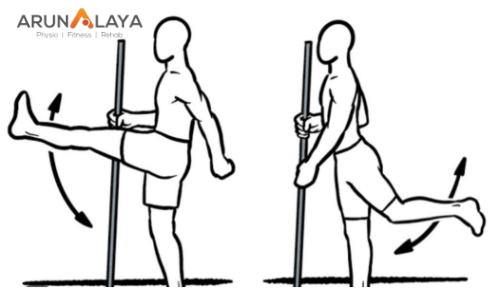A pulled hamstring, commonly referred to as a hamstring strain, is an injury frequently encountered by athletes engaged in activities demanding rapid leg movements. It occurs when the hamstring muscles, situated at the back of the thigh, are stretched beyond their limits or torn. A thorough rehabilitation regimen is vital not only for a full recovery but also to stave off potential future injuries. In this piece, we delve deep into a comprehensive pulled hamstring rehabilitation protocol, highlighting indispensable exercises, advanced techniques, and the indispensable role of a compassionate physiotherapist in the recovery journey.
PHASE 1: Early Steps to Foster Healing (Days 1-7)
1. Rest and Protection:
During the initial phase, the emphasis is placed on safeguarding the injured muscle. Optimal rest, avoiding actions that exacerbate the injury, and, if necessary, utilizing crutches are pivotal.
2. Ice Application:
Apply ice for 15-20 minutes every 2-3 hours to manage pain and reduce inflammation.
3. Pain Management:
Non-prescription pain relievers, as advised by a knowledgeable physiotherapist, can help manage pain and alleviate discomfort.
PHASE 2: Facilitating Active Recovery (Days 7-14)
1. Gentle Passive Stretching:
Controlled static stretches play a crucial role in enhancing flexibility without imposing strain. Skilled physiotherapists can guide patients through exercises like lying hamstring stretches and standing hamstring stretches.

2. Isometric Exercises:
Engage the hamstring muscles without actual movement by exerting pressure against resistance. Examples include isometric hamstring contractions performed while sitting or lying down.

3. Incorporating Eccentric Movements:
These exercises encompass controlled elongation of the hamstring muscles. One particularly effective exercise is the Nordic hamstring curl, renowned for its ability to prevent future injuries.

PHASE 3: Progressing into Intermediate Rehabilitation (Week 3 and Beyond)
1. Engaging in Active Stretching:
Dynamic stretches such as leg swings and leg kicks are introduced to boost flexibility and range of motion.

2. Building Strength Gradually:
Commence with bodyweight exercises like bridges and single-leg bridges. Gradually transition to resistance band exercises like seated leg curls and standing leg curls.
3. Embracing Functional Movements:
Integrate movements that mimic everyday activities or those specific to sports. Examples include lunges, step-ups, and squats.
Advanced Techniques and Exercises for Comprehensive Recovery
1. Proprioceptive Training:
Balancing and stability exercises foster effective collaboration between muscles and nerves. These include single-leg balance and wobble board training, nurturing proprioception.
2. Agility Drills:
For athletes, agility training helps regain speed and coordination, incorporating ladder drills, cone drills, and lateral movements.
3. Plyometric Exercises:
These explosive movements amplify muscle power and coordination, featuring exercises like box jumps, bounds, and hurdle hops.
4. Myofascial Release:
Techniques such as foam rolling can relieve muscle tightness and enhance blood circulation.
5. Leveraging Kinesio-Taping:
Incorporating kinesio-taping can offer pain reduction, biofeedback, support, and enhanced circulation, enriching the pulled hamstring rehabilitation process.

6. Gradual Resistance Training:
Incrementally increase resistance with weights or resistance bands to perpetuate strength enhancement.
Importance of Repetitions and Progression:
Repetition and progression are tailored to injury severity and patient progress. A general guideline is to initiate with 2-3 sets of 10-15 repetitions for each exercise, gradually escalating as tolerated. Progression involves elevating resistance, intensity, and complexity to invigorate muscle growth.
Conclusion:
Healing from a pulled hamstring necessitates a comprehensive, skillfully managed rehabilitation plan under the guidance of an expert physiotherapist. The meticulously outlined phases, coupled with advanced techniques and exercises, provide a structured path to recovery. Adapting the protocol to individual needs, closely monitoring progress, and fine-tuning exercises are crucial for a triumphant rehabilitation journey. Always consult healthcare professionals before commencing any exercise regimen, particularly after an injury.

